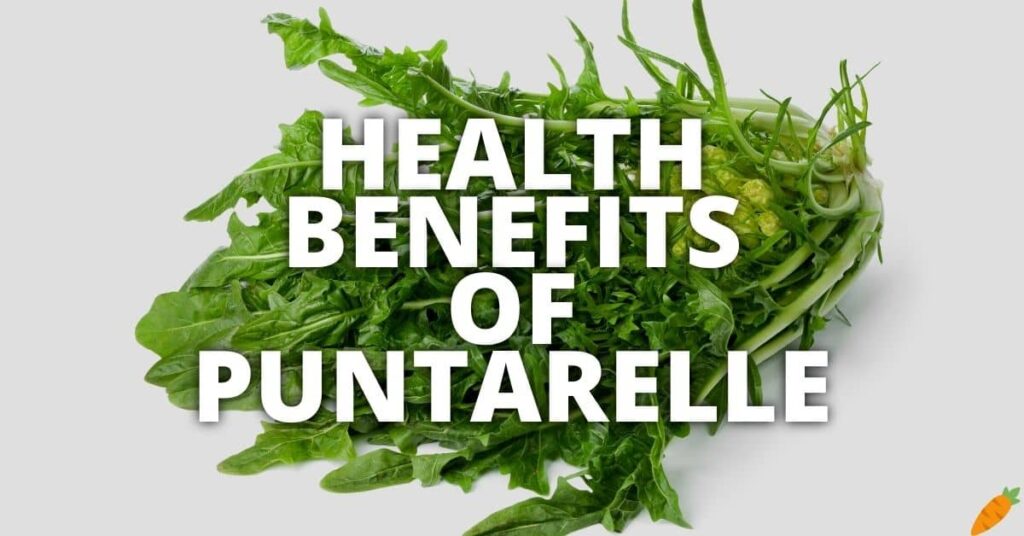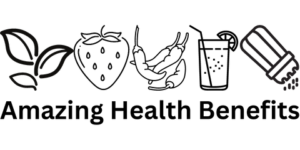Puntarelle is a leafy green vegetable from Italy that belongs to the chicory family.
It has a crisp texture and a slightly bitter flavor, making it a unique addition to many dishes.
Researchers and nutrition experts have looked at the potential health benefits of puntarelle, which include supporting digestion, bone strength, and heart health.
This vegetable is also rich in fiber, vitamins, minerals, and antioxidants that may help protect the body from illness.
Learning about puntarelle can show why it is both a nutritious food and a traditional ingredient worth adding to a healthy diet.
1. Puntarelle Contains A Lot Of Fiber
Puntarelle is a unique and flavorful vegetable that can be a great addition to any healthy diet.
It may come as a surprise, but this vegetable is actually incredibly high in fiber, which is essential for good digestion.
The stalk of puntarelle, along with its leaves and inner bud, provides most of this fiber and makes the vegetable both nutritious and filling.
People often enjoy its crunchy texture, which adds variety to meals while still offering important nutrients.
The high fiber content makes puntarelle an excellent choice for those looking to support gut health without giving up taste.
Both soluble and insoluble fibers are present, and each type plays a different role in the digestive system.
Soluble fiber absorbs water and turns into a soft gel, which helps regulate blood sugar and cholesterol.
Insoluble fiber does not break down but instead helps move food more smoothly through the intestines.
The balance of these fibers in puntarelle supports regular bowel movements and helps you feel satisfied after eating.
Adding puntarelle to salads, side dishes, or even traditional Italian recipes is an easy way to enjoy its crunch while improving daily fiber intake.
📙 Potential Health Benefits of Bush Banana
2. This Vegetable Is A Rich Source Of Vitamins And Minerals
Puntarelle has a lot of vitamins A and C and important minerals like iron, magnesium, and zinc.
This nutritious vegetable has amazing health benefits that should be explored by everyone.
The high number of vitamins and minerals helps your body fight off infections and viruses, and gives you enough fiber and protein to keep you going all day long.
The calcium in puntarelle can help your bones get stronger, and the vitamin E in it can help your skin stay healthy.
📙 Potential Health Benefits of Taro Leaves
3. Puntarelle Could Be An Antioxidant
Puntarelle may be a powerful source of antioxidants that help protect the body from harmful substances.
Studies have shown that this vegetable contains many polyphenols, which are natural compounds in plants that have strong antioxidant properties.
These compounds may reduce the damage caused by free radicals, which are unstable molecules linked to aging and disease.
Puntarelle is a type of catalogna, a group of chicories that have been grown in Italy for centuries and are valued for both flavor and nutrition.
Farmers carefully cultivate puntarelle to preserve its crisp texture and high levels of beneficial compounds.
The polyphenols in puntarelle may protect cells from oxidative stress, which can lower inflammation in the body.
This protection may also reduce the risk of chronic problems such as diabetes, heart disease, or certain types of tissue damage.
Eating puntarelle regularly is a simple way to give your body more antioxidants while also enjoying a traditional vegetable with a long history in Italian cuisine.
📙 Potential Health Benefits of Common Purslane
4. May Have Anti-Inflammatory Properties (My Favorite Potential Health Benefit Of Puntarelle)
Studies show that compounds in puntarelle may be good for your health as a whole and help reduce inflammation.
This could be a different way to treat diseases that cause inflammation, like arthritis or lupus.
Mice studies have shown that these compounds can reduce inflammation and improve the health of tissues by a lot.
These compounds are known as sesquiterpene lactones, which interact with certain receptors in the body and help to prevent further damage being done by the body’s immune system.
These sesquiterpene lactones also seem to lower oxidative stress and the number of cytokines that cause inflammation.
These findings have been encouraging for researchers looking into natural remedies for inflammatory conditions.
📙 Potential Health Benefits of Lamb’s Quarters

5. Puntarelle May Help Maintain a Healthy Digestive System
Puntarelle is full of fiber, which helps keep your digestive system healthy by encouraging the growth of good bacteria in the gut and making you go to the bathroom more often.
It also contains prebiotics that can help feed these helpful microorganisms so they can do their best work at maintaining intestinal balance.
In addition, puntarelle is low in calories and fat, making it an ideal choice for those looking to maintain or reach a healthy weight.
Overall, eating more of this strange and useful vegetable could help your body digest food better.
📙 Potential Health Benefits of Celery Leaves
6. May Improve Cardiovascular Health
This nutrient-rich plant may also have potential beneficial effects on heart health.
Researchers think that puntarelle has a lot of antioxidants, like vitamins A and C, that can help protect the heart from damage caused by oxidation.
Also, puntarelle is a great source of fiber and minerals like magnesium, which are known to lower cholesterol and improve heart health.
Puntarelle may also help reduce inflammation in the body, which may lower the risk of developing long-term diseases such as heart disease or stroke.
Studies show that this vegetable has phenolic compounds, such as flavonoids, which help reduce inflammation and can help lower blood pressure and other risk factors for coronary artery disease.
📙 Potential Health Benefits of Ube
7. Puntarelle May Help Support Strong Bones
This unique, leafy vegetable has an impressive range of health benefits, and the nutrients it contains can work wonders on your bones.
The main way in which puntarelle can help your bones is by providing essential minerals like calcium and magnesium.
Calcium is important for strong bones, and magnesium helps improve bone mass density and reduce inflammation caused by arthritis and other joint problems.
Puntarelle also contains vitamin K1 and K2; these vitamins are important for maintaining healthy levels of calcium in the body, helping to keep our bones strong over time.
📙 Potential Health Benefits of Malunggay Leaves
8. Might Promote Good Eye Health
Not only does puntarelle contain vitamins, minerals, and antioxidants that can help keep your vision healthy and strong, but it also has properties that may help prevent age-related macular degeneration and cataracts.
The secret lies in its rich content of lutein and zeaxanthin, two powerful carotenoids found in many leafy green vegetables.
Lutein helps protect the eyes from the harmful blue light that is given off by modern screens, and zeaxanthin works to improve overall vision by increasing the density of pigment in the macula, which is an important part of our eyesight.
📙 Exploring the Potential Therapeutic Effects of Various Vegetables
9. Puntarelle Could Enhance The Immune System
Puntarelle is known to boost the immune system, which can help the body resist common illnesses and recover more effectively.
The vegetable contains many nutrients, including Vitamin C, that help reduce inflammation and protect cells from harmful free radicals.
It also has carotenoids, saponins, and polyphenols, which work together to strengthen immune function and keep the body balanced.
People often enjoy puntarelle raw in salads or cooked with garlic, but one of the most traditional ways to eat it is as puntarelle alla romana, where the vegetable is dressed with anchovies, vinegar, and olive oil.
This dish not only highlights its crisp texture but also makes it easy to include in a regular diet while supporting immunity.
Adding puntarelle in different forms allows you to enjoy its taste and health benefits at the same time.
📙 Valuable Potential Health Benefits
10. May Encourage Skin Health
Puntarelle is a popular health food choice among those looking for beautiful skin.
Puntarelle is an excellent source of nutrition that can help promote healthy skin from the inside out.
It is high in omega-3 fatty acids, vitamins A and C, folate, and selenium.
The vegetable not only gives the body the nutrients it needs, but it also has anti-inflammatory properties that reduce puffiness and redness and antioxidant properties that protect against the damage that free radicals can do to the body.
By eating foods like puntarelle that have these properties on a regular basis, you might be able to prevent signs of aging and even get rid of wrinkles that are already there.
💡 Conclusion
Puntarelle is a nutritious vegetable that offers fiber, vitamins, minerals, and antioxidants that may support many aspects of health.
Research suggests it could help with digestion, bone strength, heart health, and protection against inflammation and oxidative stress.
While these findings are encouraging, more studies are needed to fully understand the potential health benefits of puntarelle.
It is important to view puntarelle as a healthy food that can be part of a balanced diet rather than a replacement for medical treatment.
Before making major dietary changes, especially for those with health conditions or medications, speaking with a doctor is always the safest choice.
⛑️ Safety First
Puntarelle is generally considered safe for most people to consume, but there are some safety precautions to keep in mind.
People with allergies to plants in the chicory family should avoid eating puntarelle.
Additionally, individuals taking certain medications, such as blood thinners, should talk to their doctor before including puntarelle in their diet, as it may interact with these medications.
Small amounts of puntarelle are safe for pregnant and breastfeeding women to eat, but they should still talk to their doctor before making any changes to their diet.
Before making big changes to your diet, you should always talk to your doctor, especially if you already have a health problem or are taking medications.
Your doctor can help you figure out the best way to add puntarelle to your diet and tell you about any risks or interactions that could happen based on your current health.
⚠️ Content Disclaimer
This article is for general information only and should not be taken as medical advice.
It is not a substitute for professional care, diagnosis, or treatment from a qualified doctor or health provider.
You should always talk to a healthcare professional before making changes to your diet, lifestyle, or medications.
Any health benefits described are based on existing knowledge and may not apply to everyone.
You may also treat this article for entertainment purposes only and use it as a way to learn more about puntarelle.
❓ FAQs
1. What does puntarelle taste like, and how is it typically prepared?
Puntarelle has a distinct, pleasantly bitter flavor characteristic of the chicory family, with a crisp, refreshing texture similar to celery or fennel.
Traditionally, it is prepared raw in a classic Roman salad, where the shoots are thinly sliced, soaked in ice water to make them curl, and then dressed with an anchovy, garlic, vinegar, and olive oil vinaigrette.
It can also be sautéed with garlic and olive oil or added to pasta dishes.
2. Where can I buy puntarelle, and when is it in season?
Puntarelle is a seasonal winter vegetable, typically available from late fall through early spring.
In Italy, it’s a common sight in markets during this time.
Outside of Italy, it can be more challenging to find, but it may be available at specialty Italian markets, farmers’ markets in areas with a Mediterranean climate, or through gourmet produce suppliers.
3. How does puntarelle differ from other chicories like radicchio or endive?
While they belong to the same family and share a bitter note, they are quite different.
Radicchio is typically compact and cabbage-like with a robust bitterness, often grilled or used in salads.
Belgian endive has tightly packed, pale leaves with a milder, delicate bitterness.
Puntarelle is unique for its tender inner shoots and asparagus-like appearance, offering a more succulent and crisp texture.
4. Is puntarelle a “superfood”? Can it cure diseases?
While puntarelle is nutrient-dense and offers many potential health benefits, no single food can prevent or cure disease.
The term “superfood” is a marketing term, not a scientific one.
Puntarelle should be incorporated as part of a balanced and varied diet rich in fruits, vegetables, and whole foods.
It is not a substitute for professional medical advice or treatment.
5. How much puntarelle should I eat to get its health benefits?
There is no specific recommended daily intake for puntarelle.
The key to health is a varied diet.
Including puntarelle in your meals a few times a week during its season is a great way to reap its nutritional benefits.
A standard serving size, such as a cup of raw shoots in a salad, will contribute significantly to your daily intake of fiber, vitamins A, C, and K.

